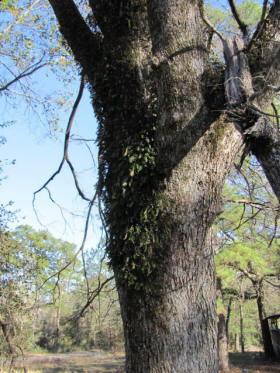Oak tree's disease in Houston
Servicing Houston and the woodlands, Oak Tree fungus
and problems
Are you having Problems with your Houston oak trees oak tree
care, live oak tree care, water oak, oak diseases, does your oak tree have a white
powder on the leaves or is the Tree defoliated.
We provide ground fertilization treatment,
spraying and disease diagnosis.
936-445-0095
There are many disease that can affect your oak tree.
Oaks are the favorite food of gypsy moth larvae. These caterpillars are about 2½ inches long with 5 pairs of blue spots and 6 pairs of red spots along their backs. They can completely defoliate a mature tree in 2 weeks. The tree may die after repeated defoliations. .
We provide service to the woodlands tx, benders landing, the champions area, bunker hill hedwig vbillage, hiklshire village Hunters creek piney point village, spring valley village.
Oak diseases
There are many diseases that can affect your oak tree. Brown egg
cases appear on trunk Larvae Of Gypsy Moths -
Gypsy moths like oaks where they lay there larva. These caterpillars are about 2½ inches long with 5 pairs of blue spots and 6 pairs of red spots along their backs.
They can completely defoliate a tree in 2 weeks. If they do it
several times they can kill the tree.
There eggs sit dormant over the winter until spring, when the
caterpillars hatch and head up into the foliage to feed.
Two spotted oak bore Adults are cylindrical, metallic beetles, color
from golden-green, green, blue-green, blue to violet. The elytra are
slender and have two white spots near the posterior end.
Alphacorps tree care has a special proprietary formula for treating
oak bores effectively. While some of our clients try to control
bores by buying off the shelf chemicals from the local hardware
store they often don't work and are quiet often about 1percent
strength of our industrial chemicals.
Roots Growing Above Soil Surface Pin Oak Trees are often found with
some of their roots growing above the surface of the soil. This is
because they are growing in compacted soils.
The Northern red oak tree grows fast and will survive in a variety of soil conditions; however, it prefers to be near stream or river beds.
The leaf spots may run together, resembling a blotch or blight. The
dead areas follow the veins or are bounded by larger veins.
Sometimes terminal stem shoots are infected back to several inches
below the buds. Pustules containing pinkish spores appear. Dieback
and defoliation may occur in severe cases.
Anthracnose is not life-threatening to large, established trees but
can often be treated with success. Swellings and growths on
twigs and leaves Gall Insects - Twigs, leaves, and even the acorns
of Oaks are commonly disfigured by odd shaped growths called galls.
These buttons, cones, bullets, balls, and blobs are caused by minute
gall wasps or flies which lay their eggs in the plant tissue. When
tiny grubs hatch out, they secrete powerful plant growth substances
that force the tree to form the gall around the developing insect,
which lives on nutrients from the abnormal growth.
Oak Mites - Oak mites are about 1/50 inch long, barely visible to
the unaided eye. Resembling tiny spiders, they have four pairs of
legs, piercing-sucking mouth parts, and very compact bodies. They
may be yellow, green, red or brown. If the top surfaces of the lower
leaves on the Oak tree are stippled with small yellow dots or red
spots, it is likely that mites are the cause.
When they get spider mites, leaves turn bronze, wilt, drop Oak Wilt, A Fungal Disease - Most Oaks are susceptible to this systemic fungal disease, although members of the Red Oak group are hit harder than White Oaks.
Tree care in Houston metro area to the Greater Houston area, Garden oaks, the Woodlands tx, spring area and Conroe, cypress fairbanks ,the champions, Lake conroe, Magnolia area and the Houston heights area. lake Conroe, Willis tx., including Downtown, Galleria, West U, River Oaks
.jpg)